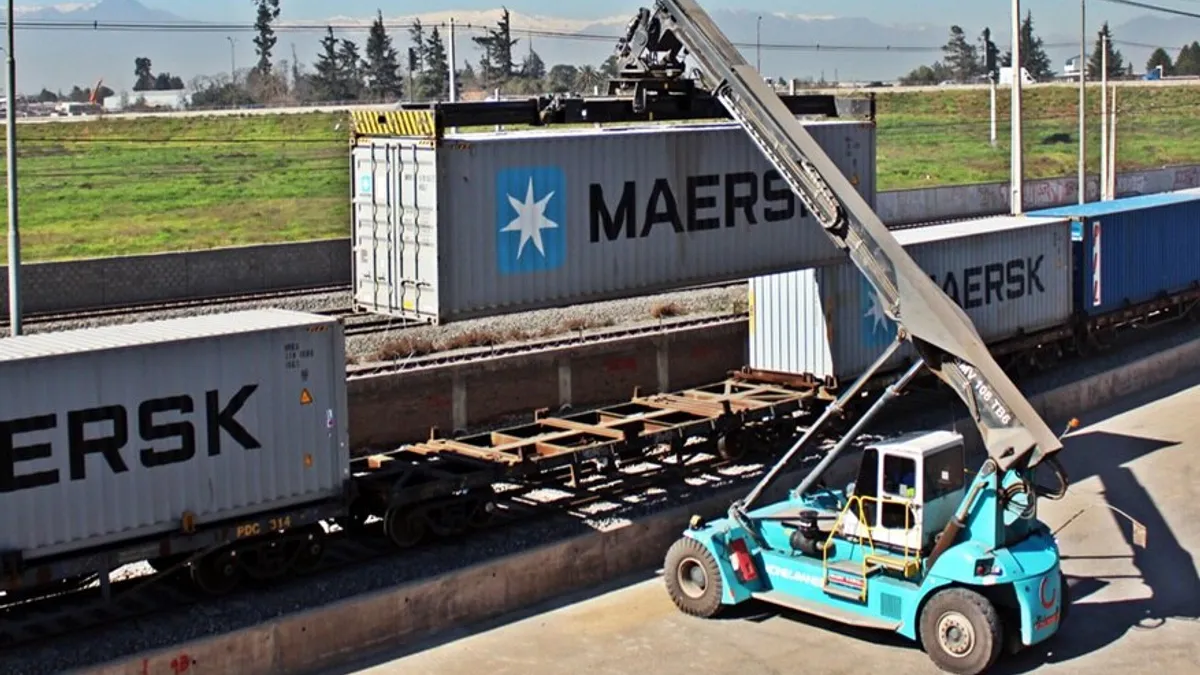Dive Brief:
- Maersk is working with stakeholders to address U.S. export and congestion challenges stemming from an ongoing surge in imports at U.S. seaports, the carrier said in a press release last week.
- Maersk has been holding meetings with the Federal Maritime Commission, the Agriculture Transportation Coalition and the Harbor Trucking Association.
- Maersk did not provide specifics on how it is working to improve export flow beyond its meetings with stakeholders. But it did outline its goal of improving the rate of dual transactions at APM Terminals' Pier 400 in Los Angeles, noting that 65% of its transactions are already dual transactions.
Dive Insight:
Equipment availability and port congestion roiled the shipping industry in the second half of 2020, and the logistics community has predicted continued bottlenecks through at least the Lunar New Year.
Maersk's notification of working with stakeholders came just over a week after two FMC commissioners sent a letter to the World Shipping Council expressing concern at reports that U.S. exporters are having cargo refused by major ocean carriers.
"We started to hear ... that the carriers were increasingly moving to try to get containers, in particular, back and positioned in Asia," FMC Commissioner Carl Bentzel said in an interview last month.
This led the FMC to begin an investigation and warn carriers their failure to provide containers to exporters could violate the Shipping Act.
"As the global integrator of container logistics, we are confident we can find workable solutions that will alleviate supply chain pain points," A.P. Moller - Maersk CEO Søren Skou said in a statement.
Stakeholders have called for more dual transactions to help with container flow through ports, so that each truck arriving to a port terminal with an empty container also leaves with a load.
The California ports of Los Angeles and Long Beach have separately said they're working to increase dual transactions.
HTA CEO Weston LaBar has been calling for increased dual transactions since at least October when C.H. Robinson warned its customers of severe congestion at California ports. Maersk said it was in "daily contact" with LaBar.
While multiple members of the shipping community have acknowledged the issues around equipment and congestion, they have also noted that they likely won't go away overnight.
"Every ocean carrier is undertaking a massive effort to reposition containers to Asia to meet the elevated demands," Matson CEO Matt Cox said in November. "We don't expect the equipment demand and the port congestion factors to change in the near future."
Volume at the Port of Los Angeles is expected to be up an average of 88% YoY in the first two weeks of 2021 — a sign that swelling imports have yet to let up.















